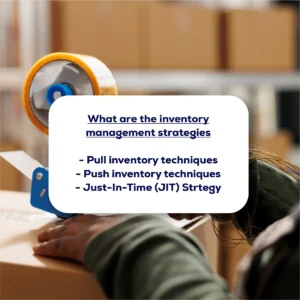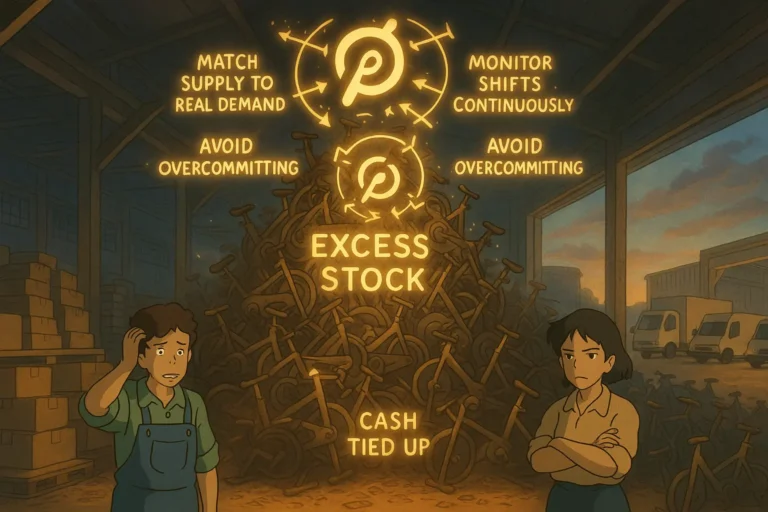
Applying inventory management strategies effectively can help you achieve optimal results in your supply chain operation.
With the supply chain challenges the world has experienced in the last few years, business organizations are going over and beyond to implement inventory management strategies that can guarantee supply chain agility. Implementing these strategies has also resulted in initiatives to leverage tech tools such as big data, AI, and machine learning. These initiatives empower inventory management systems and effective decisions that allow supply chains to meet the increasing demand for reduced lead times.
The supply chains also enjoy lean manufacturing or production and greater forecasting accuracy.
Effective inventory management strategies have been great for supply chains worldwide, but what are these strategies?
What Are The Inventory Management Strategies
Supply chain cost is a major reason for choosing or leveraging inventory management strategies.
However, every supply chain is unique because of industry, demand, product nature, structure, and many other factors. By implementing the best strategy, businesses can reduce costs while streamlining and optimizing the supply chain. There are three common inventory management strategies or techniques.
Pull Inventory Technique
Using this strategy, the organization manages its inventory, consisting of raw materials and finished goods, in relation to customer demand.
But what does this mean? The organization is allowing its customers to dictate its production or acquisition schedule. This strategy creates a double-way street of supply and demand.
The organization would only create and supply when customers demand it.
The pull inventory technique is tailored to specific industries, such as aviation, considering the expensive nature of procuring raw materials and keeping finished products on the books. The strategy may not work in other industries because consumer demands are susceptible to change, which could result in problems adjusting the output level to keep up. Organizations like Amazon wouldn’t do well with this system because its service guarantees speedy delivery.
The pull strategy pulls demand from consumers before getting into production, so one cannot expect much speed there.
Push Inventory Technique
This inventory management strategy is adapted when organizations manufacture products and market them to consumers.
Estimated demand is the basis of this inventory management technique, favored by industries that don’t produce everyday goods such as clothes. Rather than waiting for customers’ demands, the supply chain creates as many products as it thinks its consumers will want markets the products, and waits for the orders to come in. The technique is risky because it could result in excess or wasted inventory if the demands are not as expected.
On the other hand, it helps keep supply chain costs low because these organizations create products in bulk, which also impacts their operational costs.
Tech-producing businesses such as Apple or Samsung favor this inventory management strategy. The push strategy is the opposite of the pull strategy. This strategy pushes the product to consumers and is expected to be demanded.
Just-In-Time (JIT) Strategy
The just-in-time strategy can easily be a mix between the push and push strategy, but it is more similar to the pull strategy.
It takes advantage of available technologies such as big data, the Internet of Things, Omni-channels, personal digital assistance, and many others to predict demand and get products to the consumer on time. To do this, supply chains collaborate more with their suppliers, syncing their businesses and promoting communications between all the supply chain segments.
The commerce, fashion, and food industries are examples of industries that are big on this kind of inventory management strategy.
Because this type of strategy relies on the availability of raw materials, it can sometimes create delays in delivering the end products to the consumers. However, holding off on the production of goods until the demands start rolling helps keep the cost of holding inventory low or non-existent. In getting the best out of this strategy, there is a need for outspoken demand from the customer and for these organizations to understand market forecasting properly.
Unlike the pull or push strategies, the JIT works mainly with trends.
Deciding Between The Inventory Management Strategies in Africa? Here are Some Factors to Consider
Because inventory management is essential when planning your supply chain, it is important to pick the right inventory management strategy.
But the question is how? Here, we outline three main factors to consider when choosing the right strategy for your company.
Capital or Finance
This factor may play one of the most important roles when deciding on your inventory management strategy.
The availability of capital, access to loans, and insurance play major roles in inventory management. At the very least, capital or finances may limit the effectiveness of your chosen strategy. Although strategies like just-in-time inventory management are attractive to many organizations, they can be quite capital-intensive.
Product Type
When selecting an inventory management strategy, the type of product the manufacturer produces also plays an important role.
Organizations within the fashion industry will favor the pull strategy or a mix between that and JIT strategy because clothes are seasonal. Seasonal clothes typically mean the company must produce different types of stock within the year. It makes sense that they pull from demand. Juxtapose that with a scissors manufacturer whose product can stay on the shelf longer without urgent demand.
The scissors manufacturer will typically favor the push inventory management strategy.
Fulfillment Obligation
With increasing global competition between supply chains, businesses are concerned with their lead times.
That is the time between order and delivery. Lead times can significantly increase customer service and secure brand loyalty. Not all organizations have to worry about lead times. However, those that do typically favor the JIT or pull strategy. A great supply chain always delivers, even amid crises such as warfare or a pandemic.
However, supply chains during a war require unique adjustments; this article reviews some of those.

Obinabo Tochukwu Tabansi is a supply chain digital writer (Content writer & Ghostwriter) helping professionals and business owners across Africa learn from real-world supply chain wins and setbacks and apply proven strategies to their own operations. He also crafts social content for logistics and supply chain companies, turning their solutions and insights into engaging posts that drive visibility and trust.











2 thoughts on “Inventory Management Strategies That Work: A Review”